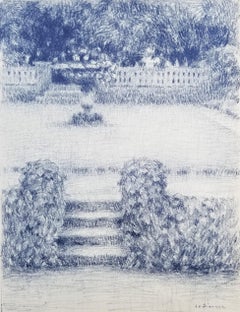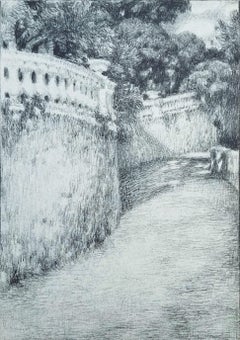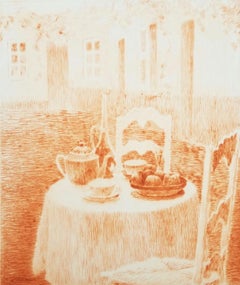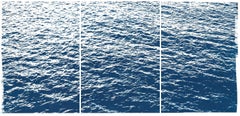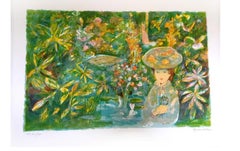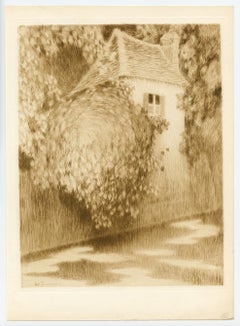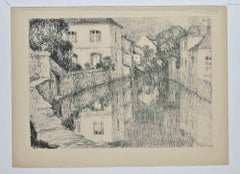Henri Le Sidaner Prints and Multiples
Henri Le Sidaner was an intimist painter, born to a French family in Port Louis, Mauritius. In 1870, he and his family settled in Dunkirk. Le Sidaner received most of his tutelage from the École des Beaux-Arts under the instruction of Alexandre Cabanel but later broke away due to artistic differences. Between 1885–94, Le Sidaner lived year-round at the Etaples art colony and was joined there by his childhood friend Eugène Chigot, who shared his interest in atmospheric light. Later, Le Sidaner traveled extensively throughout France. He also visited many cities around the globe, as well as villages throughout Europe. He exhibited at the Salon, the Galeries Georges Petit in Paris and the Goupil Gallery in London, and settled in Gerberoy. Marcel Proust's mention of Le Sidaner's work in his novel In Search of Lost Time confirms its later reputation. In Sodom and Gomorrah, the narrator mentions that an eminent barrister from Paris had devoted his income to collecting the paintings of the highly distinguished but not great Le Sidaner.
Early 1900s Post-Impressionist Henri Le Sidaner Prints and Multiples
Lithograph
1890s Impressionist Henri Le Sidaner Prints and Multiples
Lithograph
1920s Impressionist Henri Le Sidaner Prints and Multiples
Drypoint, Etching
1910s Post-Impressionist Henri Le Sidaner Prints and Multiples
Lithograph
1920s Impressionist Henri Le Sidaner Prints and Multiples
Drypoint, Etching
1920s Post-Impressionist Henri Le Sidaner Prints and Multiples
Drypoint, Etching, Intaglio
1920s Post-Impressionist Henri Le Sidaner Prints and Multiples
Drypoint, Etching, Intaglio
2010s Post-Impressionist Henri Le Sidaner Prints and Multiples
Lithograph, Paper
1960s Post-Impressionist Henri Le Sidaner Prints and Multiples
Lithograph
1880s Impressionist Henri Le Sidaner Prints and Multiples
Drypoint, Etching
1930s American Impressionist Henri Le Sidaner Prints and Multiples
Drypoint
1890s Impressionist Henri Le Sidaner Prints and Multiples
Drypoint, Etching
1940s Impressionist Henri Le Sidaner Prints and Multiples
Lithograph
Mid-19th Century Impressionist Henri Le Sidaner Prints and Multiples
Laid Paper, Drypoint, Etching
1940s Impressionist Henri Le Sidaner Prints and Multiples
Lithograph
1970s American Impressionist Henri Le Sidaner Prints and Multiples
Lithograph
1940s Impressionist Henri Le Sidaner Prints and Multiples
Lithograph
1860s Impressionist Henri Le Sidaner Prints and Multiples
Lithograph
1990s Impressionist Henri Le Sidaner Prints and Multiples
Lithograph
1920s Henri Le Sidaner Prints and Multiples
Etching
Early 20th Century Modern Henri Le Sidaner Prints and Multiples
Lithograph
1920s Post-Impressionist Henri Le Sidaner Prints and Multiples
Lithograph
Early 20th Century Henri Le Sidaner Prints and Multiples
Lithograph
Early 1900s Impressionist Henri Le Sidaner Prints and Multiples
Lithograph
